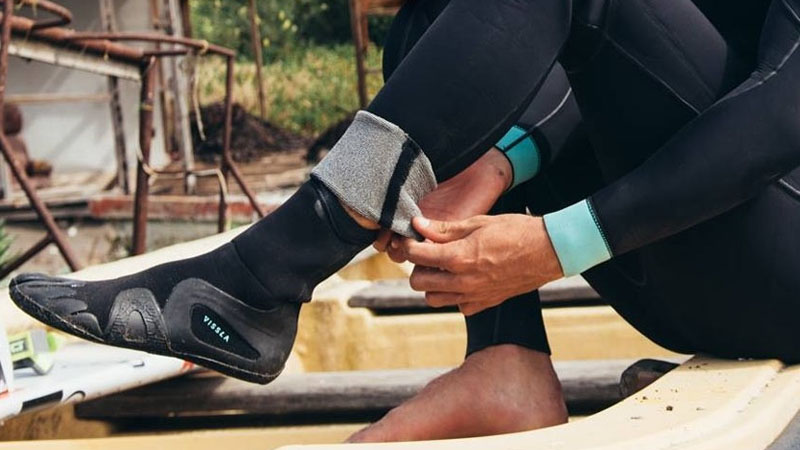Wetsuit Booties: Your Ultimate Guide to Foot Comfort for Water Sports
Regarding water sports or activities, having the correct gear is important for performance and comfort. Wetsuit booties can be overlooked but are essential for keeping your feet protected, warm, and comfortable when you’re in the ocean. In this guide to wetsuits and booties, we discuss their importance, different types, and the way to choose the right pair, and the proper care so that they will serve you well in many of your aquatic adventures.
Why Are Wetsuit Booties so Important?
Wetsuit booties have several purposes, which makes them a must-have piece of equipment for any water enthusiast:
1. Thermal Insulation: One of the main functions of wetsuit footies is thermal insulation. The neoprene used in booties traps thin layers of water that warm up to act as an insulating material, keeping your foot warm even in cold water.
2. Protection: Wetsuit boots protect your feet from hazards in the sea. They protect your skin against sharp corals, stones, and shells you may encounter while snorkeling.
3. Traction: The rubber or grippy sole on wetsuits provides traction, making walking easy on wet surfaces such as boat decks and uneven underwater terrain. This increased grip is important for safety and stability in water sports.
4. Comfort: Wetsuit booties are made with comfort in mind. They offer cushioning and support for your feet, helping to reduce the chances of blisters.
Types of Wetsuit Booties
Depending on the water condition and activity, there are many types and thicknesses to choose from. There are several common types.
1. Low-Cut Boots: Low-cut booties offer minimal insulation, as they cover the ankles and feet. They are designed for use in warmer water or when maximum flexibility is needed, such as surfing or paddleboarding.
2. High-Cut-Booties: High-cut boots offer more coverage and extend over the ankles. They provide greater insulation and protection. This is ideal for colder activities and temperatures, like snorkeling or diving.
3. Split Toe Booties: The split-toe booties feature a design that separates the big toe, making them look like a mitten. The split-toe booties are popular amongst surfers and body boarders due to their design, which enhances balance.
4. Round-Toe Shoes: Round-toe shoes have a design that closes the toes, keeping them all together. Split-toe Booties offer less warmth and protection. Round-toe Booties provide more warmth and safety.
5. Zippered boots: These booties can be easily put on and taken off with the zipper. Zippered footwear is especially useful for scuba dives, as they need to wear layers of thick wetsuits.
How to Choose the Right Pair of Wetsuit Booties?
Selecting the perfect pair of wetsuit booties involves carefully considering several factors.
1. Water Temperature: Your booties’ thickness should correspond to your exposure to water temperatures. Thick booties for colder water are recommended, whereas thinner booties for warmer water are more suitable.
2. Activity Type: Consider the specific type of activity you plan to engage in. Surfing, diving, and snorkeling require different booties in style and thickness.
3. Fit: Be sure to get a snug yet not too tight fit. The booties must fit properly to keep out water while still providing comfort.
4. Sole grip: Ensure the soles are grippy enough, particularly if used on slippery or rocky surfaces.













